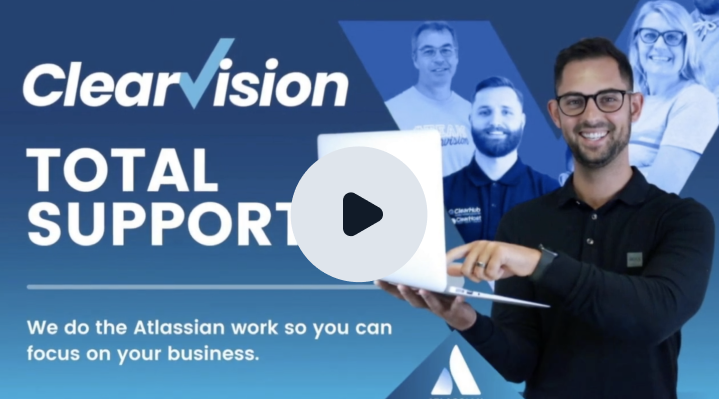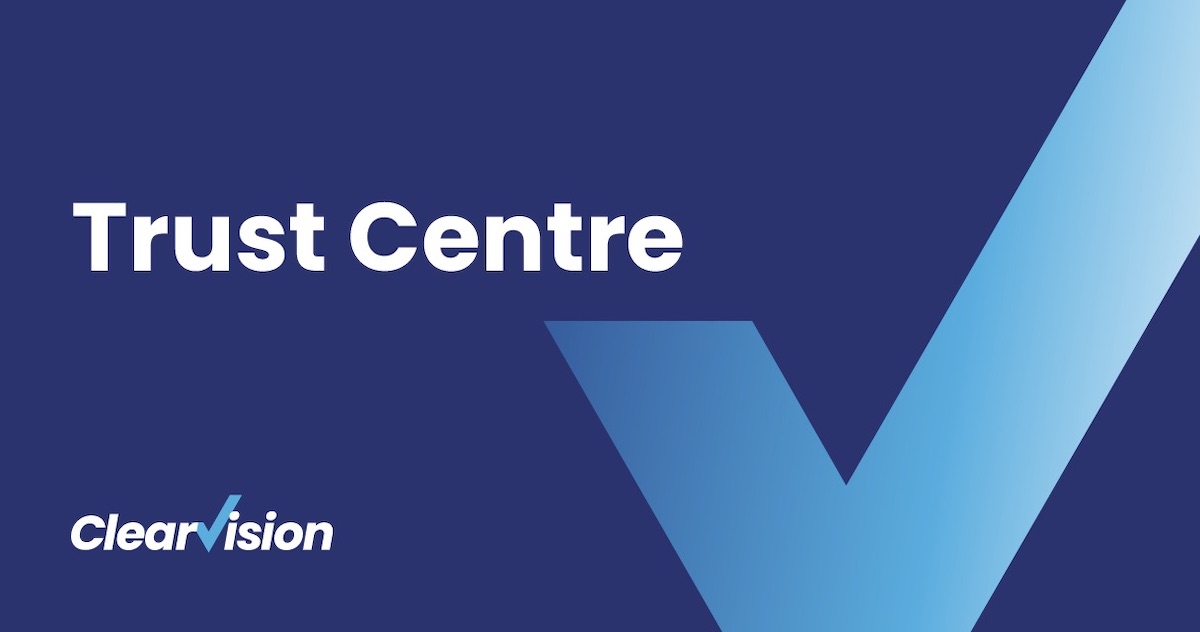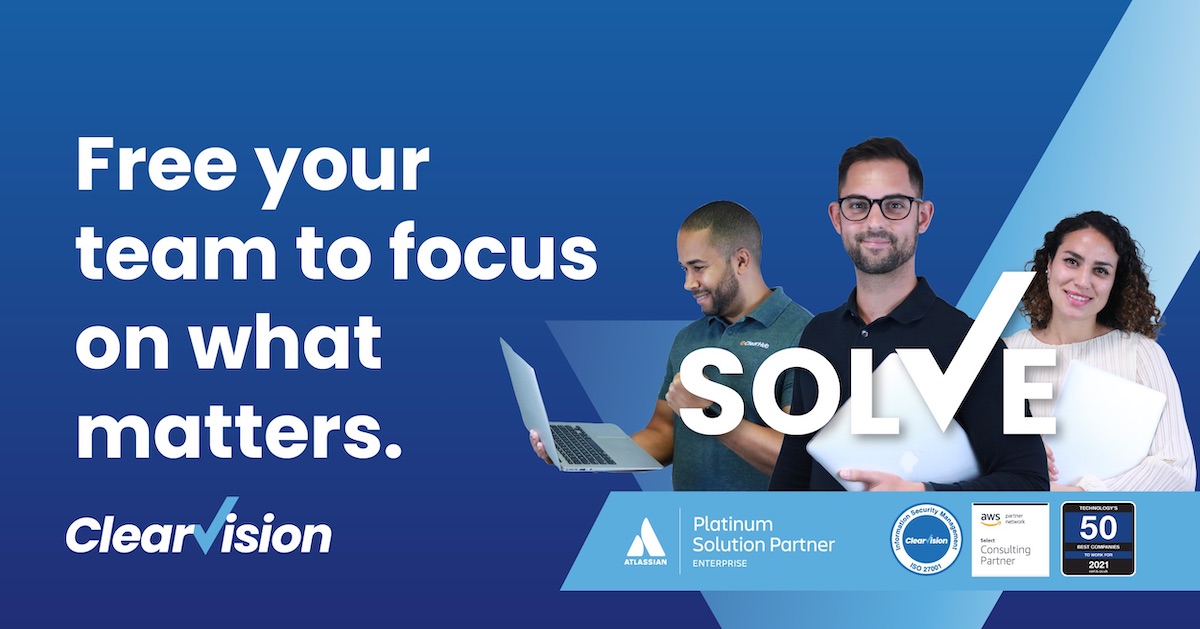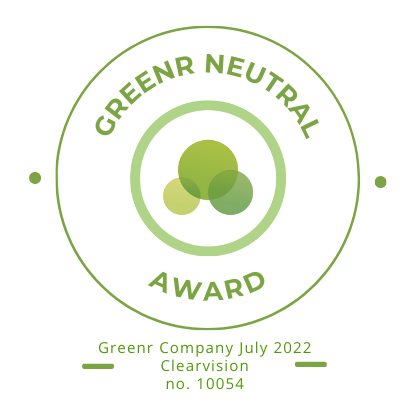Atlassian Cloud episode notes
Clearvision (now part of Eficode) Solution Architect, Gary Blower, is joined by Atlassian Administrator, Dan Tombs in this recording about the Atlassian Cloud roadmap. Tune in as they discuss their top 5 picks for what’s to come including Asset Management in Jira Service Management, templates in Confluence and more!
Gary: Welcome to Clearvision’s first podcast episode of the year!
My name’s Gary Blower, I’m a Senior Solution Architect with Clearvision, and I’m joined by my friend and fellow Atlassian Administrator, Dan Tombs. Hi, Dan.
Dan: Hello, how are you?
Gary: Yes, not too bad, not too bad at all. So we’re going to kick things off talking a little bit about Jira Service Management, something that both Dan and I know quite a bit about. And we’re looking at the Atlassian Roadmap in particular because, over the course of the next 12-months, there’s lots of really exciting and interesting features that are actually coming to Jira Service Management, and what we’ve done is we’ve chosen our personal top five things to look out for. And we’re just going to basically just go through those with you, giving you a bit of background information, and sharing our thoughts on it. So, if I start with yourself, Dan, do you want to give us one of your top five things to look out for this year?
Insight - Jira Service Management
Dan: Yeah, for sure. So I am a big advocate for Insight, the Asset Management part of JSM. And they are massively increasing the functionality inside the Cloud. So the fact that they’re bringing back the attachment support, they’re doing the cross schema IQL, so the Insight Query Language, and you can start doing your QR code generations like you could back on the Server versions, and they’re actually putting the Insight functionality on the native apps for your phone. So you know, the Jira app you can actually start using the Insight data as well. So, you know, that whole improvement will just make everybody’s lives so much easier.
Gary: Yeah, the QR code one is a funny one, because obviously, Data Center customers and Server customers would have had that for a while with Insight. And it’s interesting that originally there was no plan to bring QR codes to the Cloud version of the products. But I think really, customer demand-
Dan: Yes, I’m sure.
Gary: Has brought it in, because it’s such a simple thing, but it’s actually really useful, as you said, particularly on a mobile device, it means you can use a QR code to quickly look up what the device is, and see if there’s any sort of outstanding records, you know, instance against it and stuff. So yeah, it’s exciting.
Dan: Yeah, I mean, one of the biggest things with any company I imagine, is obviously the hardware asset lists. I know that in previous places, you know, you had the actual property of, and then the number against the device. So the QR code can really kind of take over a lot of that, and bring that functionality back into the Cloud, which is so important for a lot of customers.
Gary: Yeah, agreed. I think the other things we’re looking forward to is some improved search functionality for Insight. It’s quite limited on Cloud at the moment.
Dan: Yeah.
Gary: As you rightly say, but yeah, it’s good. And there is more Insight stuff coming later in the year as well. But that first batch should be really quite useful.
Dan: Yeah, for sure.
Custom reporting in Jira
Gary: Right. My first pick is actually again, this is something which we’ve known about for some time. So Custom Reporting is actually coming to the Jira platform, but also, particularly Jira Service Management. Back in February 2020, Atlassian acquired a company called Chartio, who produced sort of MI dashboards, similar to things like Tableau or Power BI. It’s a Cloud-based product. And what Atlassian are basically doing is they’re going to make this the new reporting platform for not just Jira Service Management – for the entire Atlassian suite, actually, but excitingly, the first product to get it will be Jira Service Management. So you’ll be able to create very rich and very attractive looking dashboards with some smart reports and charts and all that other kind of stuff that everybody loves. And it will pull in data from third-party apps as well. So, I know this is something that customers have been asking for such a long time, and it’s really exciting actually to see that it’s going to land sometime in Q2 2022.
Dan: I mean, personally, Gary, and I don’t know whether you agree with me, I think reporting while could be such a massive strength for Jira, in terms of its query language, and the ability it has to find and like search data, is reporting mechanisms have always been lacking. So for this Chartio to come into the Atlassian platform is huge, and will actually kind of start to rival the other platforms, and it means that you can do a lot more natively without having to rely on additional applications.
Gary: Definitely, because at the moment, if you look on the Marketplace, there’s like one-thousand-and-one different reporting add-ons.
Dan: Yeah for sure.
Gary: And it’s really because the vendor solution-I mean, it’s old, let’s face it, the Jira dashboards and stuff have been around for 15-20 years. So it was due a major upgrade, and it’s just exciting that JSM gets it first really.
Dan: Oh, for sure!
Atlassian analytics capabilities
Gary: Okay, Dan, you want to give us your next pick?
Dan: Yeah, well, that kind of leads me on very nicely to one of my great things I’m looking forward to, which is the Atlassian analytics capabilities. And I actually found this out with a couple of customers, which was that they are going to create a standard-obviously for every customer, but a standard data lake. So, bringing in Chartio, having a single data lake where you can do all your reporting mechanisms, obviously, the fact that you can bring in other applications as well, means that Jira, well actually any of the Atlassian suite, will become this hub for data for a company. And I think that’s actually such an important feature. I know those that are looking at extending their Atlassian application usage with things like Jira Align or any of the other platforms, this will be huge for them to have an actual data lake inside their Atlassian world.
Gary: Yeah, and it’s been in closed beta, hasn’t it? Since the Chartio acquisition, it’s all part of the same thing. Basically, Chartio needs it to work, essentially. But yeah, I think that’s due to launch around the same time. But yeah, so at the same time that Chartio will be available, then if you use Power BI, or Tableau or any of these others, I think there’s about a dozen isn’t there supported MI tools you can use, then you’ll just be able to pull the data straight into your MI tool as well.
Dan: Yeah, because we-I know, again, working with other customers before, they were having to look at AWS QuickSight to do all of this and pull in all that data, obviously, there are tonnes of other ones, but having a native data lake will just make things so much easier. For everyone.
Dynamic Forms native to Jira Service Management
Gary: Agreed, it’s definitely the weak area of all the products in the moment. Okay, my next pick, I’m going to go for at time of recording, it should actually have already gone live, but it still hasn’t. But that’s Dynamic Forms native to Jira Service Management.
Dan: Yes!
Gary: So this formally, and Dan is nodding because Dan and I worked with this product for many years, this was what was called ProForma by a company called ThinkTilt; Atlassian acquired them back in, I think it was January or February time again. And it was expected to be released by the sort of end of December. But as of time of recording still has not gone live yet, but it’s literally any day now. What Dynamic Forms later do is to enhance your customer service portal with forms that have more inherent behaviour. So for example, you could have radio buttons that when you select a certain value, it then will ask you further questions on the same form. Or you can have forms that based on content you add in one field will then allow you to select different values in another. So, ProForma is really powerful, it comes with over 200 templates, and it’s going to become part of the Jira platform. It’s going to be available to all flavours of Jira, not just JSM, but initially launching with JSM. And it really, from my point of view as somebody who does a lot of IT Service Management and JSM implementations, the two big areas where this really helps is in joiners, movers, and leavers in businesses and in change management, but particularly JML. Because often, you know, if you’ve got a new starter, there’s often lots of things you have to say they’ve got to have access to this, they need access to this, and then you need to have these permissions and these rights. It’s a complicated set of questions, which the native solution today is a bit clunky to try and make that work.
Dan: I think some of the biggest things around ProForma is the conditional forms, though, as you know, as you pointed out, selecting ‘x’ in one thing could allow multiple more questions and multiple more values for other things. But it’s one of the things that the Cloud version has always lacked, is the ability to do those conditional forms. I’m really excited to see the templates as well because I think that this will speed up people getting into the software, you know, if they’ve got templates they can work from for a lot of kind of standard typical things you see on IT desks, I think it will just massively improve, you know, the ability and the usage of the tool. And like you said, coming to all flavours of Jira eventually, that’ll be amazing to see as well.
Gary: I mean, there is a bit of bias because both you and I love that product.
Dan: I have to admit, using it when it was still ThinkTilt and working very closely with okay-as yeah, I think you and I have a slight favouritism for it.
Gary: Definitely. Definitely. It was super exciting when they bought it. I was like, yes! This is a really good move.
Dan: Yeah. Well, they worked very closely with Atlassian when they were building the Jira Work Management didn’t they? So you could kind of get a little bit of a hint of what was coming.
Gary: Definitely. Okay, your third pick?
Image supporting templates in Confluence
Dan: Okay, something which I think lacks in every flavour of Confluence, which is the image supporting templates. So, templates is one of the strongest things in Confluence, the ability to uniformly create content, you know, just across the system means that every user knows exactly how to digest the page. They’re not having to find bits of information with different styles and things like that. But one of the things it’s always struggled with is the ability to support images in those templates. So seeing such a simple yet, really important feature will be amazing.
Gary: Yeah, I mean, Confluence Cloud, in particular, is getting better and better. I mean, it was a bit of a bumpy ride when it first launched the kind of new engine, but when you compare Confluence Cloud today to how the Server and Data Center products and versions of Confluence is, it’s just night and day different now.
Dan: Yeah.
Gary: So much better. And yeah, you’re right. I mean, even some of the image functionality you have now is a lot better.
Dan: Oh, for sure!
Gary: But this will take it to the next level, which is really quite exciting. Because, you know, any kind of knowledge management content is always richer through, you know, pictures and diagrams, basically.
Dan: Yeah. I mean, what’s the saying, ‘pictures speak a thousand words’, and the fact that you can bring those in, and like you said, just the Cloud functionality today, the ability to better resize images, place them around and kind of lay with text, but actually, now having these images in templates will just make that whole ride a lot smoother, for a lot of things.
External collaboration in Confluence
Gary: So segwaying nicely on. So the other thing that’s again, this has been in closed beta for some time, and is-was due to launch end of 2021. But again, was pushed back a couple of months based on customer feedback I’m pleased to say, and that is external collaboration in Confluence. So what this allows you to do is, let’s say you’ve got a knowledgebase and you want to grant access to a third party to not only view but also potentially work on, say one or two pages within your space. Previously, you could do it, but it was a bit of a messy thing where you’d have to create a dedicated group, and you’d have to grant them access and go through loops and stuff. External collaborators will allow you to create the concept of a guest role or a guest account. So you can give someone access for a limited period, you can give them access to just individual pages, so you don’t have to worry about whether they’ve got access to the rest of the system. It’s just going to give customers a lot more flexibility, and particularly if you’re, you know, if you’ve got a knowledgebase for you know, JSM, it’s going to give you the ability to do things like maybe share release notes with a specific customer, you know, or share, you know, SLA documentation with a specific customer, and only they can see it. So it’s going to really help with that ability to kind of finesse the visibility of some of your knowledge articles.
Dan: I think it goes in another direction as well though Gary in terms of allowing your-you know, if you, as you and I know very well, writing a lot of documentation for customers, whether that be your discovery, you know, notes or things like that, being able to provide that without having to export the information or present it in a way, giving that direct link and just saying, ‘here’s your whole folder with everything we discussed over the previous implementation’, they can see everything. It’s very clear. And we don’t have to faff around with all that kind of exporting.
Gary: Yeah, that’s a good point. I mean, I could see, you know, we actually use Basecamp in Clearvision, and I could see this actually, almost having Confluence replace Basecamp in many ways because you can temporarily set up access to a shared space, for example.
Dan: And it also works very nicely with contracts, you know, being able to do the inline commenting and say, you know, I’m not so keen on this bit and being able to like I said it’s just that whole collaboration with your clients or your partners, your third-party, you know, people. Yeah, it’s going to massively help.
Gary: Yeah, definitely makes it simpler. Like I said, you can kind of do it now, but it’s so convoluted, whereas this would be nice and easy.
Dan: And the whole licencing aspect also kicks in in a whole other gear.
Gary: So yeah, that’s something to look forward to with Confluence. What’s your next pick, Dan?
Automation for Confluence
Dan: Okay, so actually staying with Confluence for one more for myself; we’ve loved it ever since before Atlassian bought it, and when they acquired it, and it stayed in times of Jira – but automation for Confluence, the extension of that Jira Automation as we currently know it. So it’s the ability to build the ‘if this, then that’ kind of automations so very simple, no code automations. But Confluence as a knowledgebase-any knowledgebase is only as good as the content inside it. Things when they go stale, or pages aren’t properly dealt with on a regular basis, labelled, I mean, you know, what I’m on about. Being able to have those automation rules, keep your system clean will hugely improve performance, search criteria, everything like that. I think it’s a widely wanted feature.
Gary: Yeah, definitely. I saw a video preview of it a couple of months back, and it was just like, ‘Yeah, okay, we need this now!’.
Dan: Yes.
Gary: Because, you know, trying to do things, trying to automate things in Confluence, even with third-party products, it’s not easy. I’ve done a little bit with some of like, Bob Swift CLI thing, but this is going to make it so much easier. And being able to create a page from a Jira ticket and cross-link it, and, you know, set up business rules around that is going to be really good.
Dan: Oh, for sure. I mean, there’s kind of the two functions, like you just touched on, the whole create from Jira ticket. We ourselves, you know, looking at the security vulnerabilities, especially the kind of big one going around at the moment, when you get that security ticket in, you want to be able to record all your notes. Again, being able to just create from this, all of this template, everything just makes that whole ride so much smoother. And obviously the archiving, one of the things that kind of Confluence has always struggled with is the searching and stuff like that. I mean, it’s massively improved recently, I’m sure you’ll agree. But again, I think this automation will massively help.
Gary: Yeah, definitely. Right, my next pick is another Jira Service Management one. And this is actually currently in flight, this is already happening. But some of these changes will continue throughout early 2022. So that’s enhanced incident management within JSM. In particular, obviously, if you buy JSM today, you get Opsgenie included; Opsgenie has this whole module on Major Incident Management. That is slowly being merged back into Jira Service Management. So basically, it’ll all be in one user interface, you’re not having to open new tabs into Opsgenie, or click on links that open other tabs. So that’s from a usability point of view, it’s quite nice that you can stay within the same UI. It’s also going to allow you to actually create your own major incidents in Jira and have those managed. And in particular, you’ll be able to manage things like your on-call schedules for your different responder teams, and set up alerts to those teams directly within Jira, so you’re not having to sort of page out. So it’s the same functionality that you’ve got now, it’s just all being merged and melded together, which will just make it so much easier to use.
Dan: I mean, the relationship between JSM and Opsgenie has gone through so many different flavours, you know, when it started the Jira Ops, and then this kind of keeps amalgamating into the current version we’ve got. It’s amazing to see the enhanced functionality for projects that you kind of can just spin up now. I think like you said, you know the fact that you can start to manage your services and your on-call rotas and stuff like that – creates a much more rounded product rather than having to have two, you’ve just got this one system that kind of just really works for you.
Gary: Yeah. Saves a lot of that ‘why does it open another screen’ type question! But yeah, you know, I mean, it’s no secret, I think Opsgenie will just end up being alerting, I mean that’s basically where it’s going. So most of the Opsgenie functionality is moving into JSM. So that’s good. Okay, your fifth pick?
Multi-instance Cloud search
Dan: Wow. So, I mean, again, no secret, I’m sure a lot of companies out there are similar – will have a few different Atlassian Cloud instances, whether that’s a couple of Jira’s here and there, or stuff like that – rather than having to always consolidate those into one, to be able to search across everything, they are releasing the multi-instance Cloud search. Basically meaning no matter where you are, as long as you have access to that system, you can find the data. I think that’s really important for those companies that are looking to kind of spread the load over a few instances. I think this will again, just keep things very clean, very easy to do. I see it being a massive win.
Gary: Yeah, agreed. Because particularly with some of our larger enterprise customers on the Cloud, you’re looking at actually scaling horizontally, so it’s about having multiple Jira instances. So you’ll need a way to aggregate that data and be able to search and visualise it. And again, that leads into the whole Chartio thing, which should also enable you to then do visualisations on that.
Dan: Yeah.
Gary: So, yeah it’s definitely something that’s needed, particularly, like you said, for anyone who’s looking to operate more than one site.
Dan: Yeah, I think this whole data lake Chartio, multi-instance – this is obviously extending that remit of just being able to-like in reporting in general, I think it’s a huge win. And like you said, when you start getting to a certain point in size it’s not so much, you know, ‘let’s go up’, it’s more ‘let’s go out’. And you know, you are starting to see, well, we have a Jira for Operations, we have Jira for Development, but you know, some people need to be across both. And rather than having to know which site you have to go and search in, having one site will just be easy. Much better.
Halp conversational ticketing for Slack and Microsoft Teams
Gary: Definitely, definitely. Right. Okay, my last one, and again, this is something that’s been bubbling for a while, but hopefully 2022, we’re going to see some quite exciting changes to the way it works. So Atlassian acquired a company called Halp, H-A-L-P, again, about a year or so ago, and what Halp does is allows you to use MS Teams or Slack really as your customer service portal, basically. So rather than just using the customer service portal that comes with JSM, you can actually have Slack or Teams be your front door. And in fact, I have a couple of customers who just use Slack for everything. So if you want to request a new laptop, or if you want to log a fall, or if you want to raise an incident, or if you want to password reset, you do it all on Slack. And then it just basically with Halp, it then records all that in JSM. Any conversations in Slack are recorded against the JSM ticket, you can even open, close, and change the status of the JSM ticket straight from Slack, which is you know, awesome.
Dan: Yeah. I mean, I’ve seen a few instances where people are achieving something similar with the few apps on both Slack and in Jira. It works. I don’t think it’s probably the cleanest. So it’s really nice to see the Halp integration, kind of, become a little bit more native and usable.
Gary: Yeah, indeed, and Halp, you know, that is great. And what the exciting part is, that Halp will eventually become a core part of JSM, as well. So you won’t necessarily need to have like a separate subscription and a separate setup and everything else, it will just work. So you’ll have another channel, basically, within JSM. This is a feature that’s been like I said, bubbling around for some time. Again, it was kind of due to land sort of early 2022; we’re kind of excited to see how it looks. But for customers that are early adopters that have already got Halp and already taken advantage of this, it’s been a real gamechanger for some of them.
Dan: I mean, some of the biggest issues with managing any kind of service desk is making sure that you actually have clear numbers. I mean, you and I will agree when you get walk-ups, when you get your actual tickets through or things like that, understanding exactly how many kind of items you’re getting through is really hard. So being able to bring all of that through whether it’s from your chat tool, whether it’s, you know, from Jira directly, having just all that central knowledge has kind of massively helped.
Gary: Agreed, and particularly with the growth of hybrid and remote working, you know, through the pandemic, you know, this has really become essential for some businesses because they’re basically run on Slack. Certainly, at Clearvision we do; we use Slack for everything! So, and I know that’s true for many of our customers. Now, I believe Dan, you’ve got a sneaky sixth one you want to get in there?
Customising request columns on the portal
Dan: I did just add that one in, I’m glad you saw that one as well. But again, I think this is something that has been hinted at for a while, I know it’s been a huge thing for the whole Atlassian ecosystem in terms of what’s needed. You can do it with a couple of Marketplace apps, but that’s the ability to customise those request columns on the portal. So in the current format, or sorry, the previous one that they’re now updating, you are very much stuck in terms of only being able to see the open and closed whether you raised or someone in your organisation. And that was it, it just kind of show you available requests. But now what they are going to start looking at is the ability to add in additional columns or being able to change some of the, effectively the reporting, pushing that end-user experience onto the customers themselves, rather than having to rely on the agents to do that reporting for them.
Gary: This is one that’s new to me. I’d not actually seen this. I know there was some functionality launch recently where you can kind of rearrange bits on the customer portal, but that seemed quite limited, but this is going much further than I thought they were going to go with it actually.
Dan: Yeah, I mean, the fact that you know, like you said, you can rearrange it and start to-I think it’s just the ability to start pushing. I mean, like you said, if you can start simple with just being able to rearrange and make more sense of the current stuff, is just opening doors for the next phase.
Gary: There was a couple of add-ons that kind of did this wasn’t there?
Dan: Yeah, there was, I think it was Advanced Customer Portal, a Marketplace app.
Gary: Yeah.
Dan: I think, effectively, they’re trying to compete against that natively.
Gary: Yeah, well, it makes sense because a lot of customers do say ‘we want to be able to see all of our organisations tickets’, or ‘we want to be able to search for them’ and things like that. And it was pretty basic what you could do. But yeah, being able to sort of tailor that more is quite neat. So yeah, that was one I didn’t even know about so there you go! It’s worth just for listeners, it’s worth keeping up to date with the Roadmaps; if you just search on-using your favourite search engine. And if you just search for Atlassian and Cloud Roadmap, you’ll find the Cloud Roadmap there for all the Atlassian products, and you can filter them by the products you’re interested in. So if it’s Confluence, or Jira Service Management, or Jira align, whatever it happens to be, and you’ll see, there’s actually the Roadmap for the next two or three years is on there, which is, you know, you can kind of get an idea of the direction of the products and some of these really cool features that are coming.
Dan: Yeah, sure.
Gary: Right. Okay. So I think we’ll wrap up there. If you’d like to know more information, or if you want to speak to the likes of myself or Dan about this kind of thing, then you can always reach out through Clearvision. You can find us on the web at Clearvision-cm.com. You know, we’re more than happy to answer any questions you might have. Or if you want to, if you’ve got any feedback you want to provide us, you can do so there as well. I suppose all there is to do is to thank Dan for joining me in this pod, the first one of the year.
Dan: Thank you very much for having me, Gary!
Gary: Awesome. So do listen out for the next podcast, which will be on another interesting topic within the Atlassian ecosystem. I do hope you’ll join us then!

Gary Blower
Gary is a Solution Architect at Clearvision. He is an expert in collaboration software, and his specialities include technology adoption, service management, and software quality assurance, including software configuration management, software testing, and application security testing.

Dan Tombs
Dan is an Atlassian Administrator and fully qualified Scrum Master. He has extensive experience in software development with a focus on Jira and Confluence. His specialities include upgrading, general administration, and advice on best practice procedures for Atlassian tools.
Related Articles
Visit our blog for expert news and articles from the Atlassian world. On our resources page you will find recorded webinars, white papers, podcasts, videos and more.
The Software Blog
Read our blog for articles offering best practice advice written by Atlassian experts, as well as the latest news concerning your software.
Software White Papers and Guides
Dive deep into Atlassian software with our white papers and guides on individual tools, partner products, services, and best practices, written by the experts.
Expert Webinars
All of our webinars are pre-recorded and available to watch on-demand. Enjoy everything from partner features to application demos and updates from Atlassian experts.



















